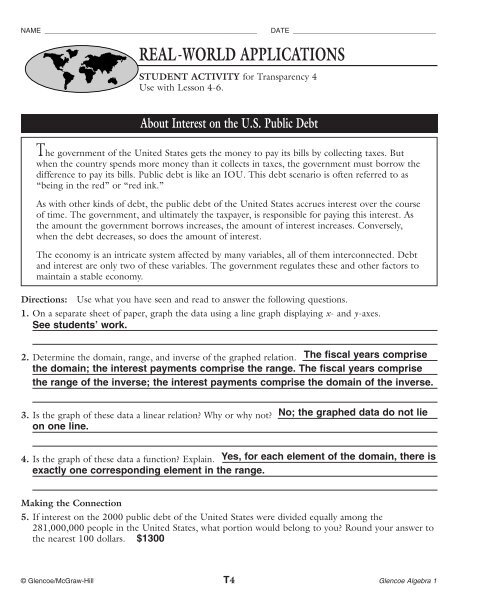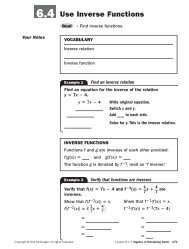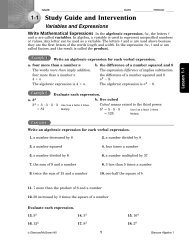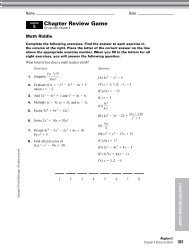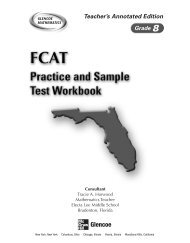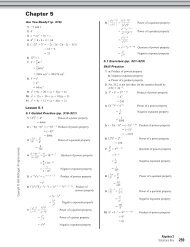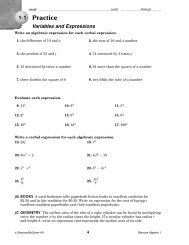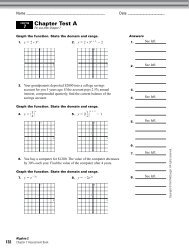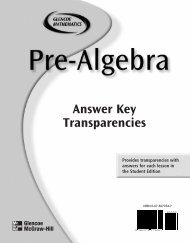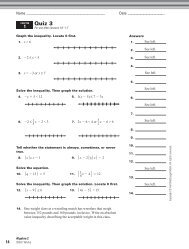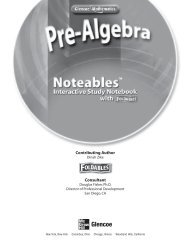real-world applications - MathnMind
real-world applications - MathnMind
real-world applications - MathnMind
Create successful ePaper yourself
Turn your PDF publications into a flip-book with our unique Google optimized e-Paper software.
NAME _______________________________________________________ DATE _____________________________________<br />
REAL-WORLD APPLICATIONS<br />
STUDENT ACTIVITY for Transparency 4<br />
Use with Lesson 4-6.<br />
About Interest on the U.S. Public Debt<br />
The government of the United States gets the money to pay its bills by collecting taxes. But<br />
when the country spends more money than it collects in taxes, the government must borrow the<br />
difference to pay its bills. Public debt is like an IOU. This debt scenario is often referred to as<br />
“being in the red” or “red ink.”<br />
As with other kinds of debt, the public debt of the United States accrues interest over the course<br />
of time. The government, and ultimately the taxpayer, is responsible for paying this interest. As<br />
the amount the government borrows increases, the amount of interest increases. Conversely,<br />
when the debt decreases, so does the amount of interest.<br />
The economy is an intricate system affected by many variables, all of them interconnected. Debt<br />
and interest are only two of these variables. The government regulates these and other factors to<br />
maintain a stable economy.<br />
Directions: Use what you have seen and read to answer the following questions.<br />
1. On a separate sheet of paper, graph the data using a line graph displaying x- and y-axes.<br />
See students’ work.<br />
2. Determine the domain, range, and inverse of the graphed relation. The fiscal years comprise<br />
the domain; the interest payments comprise the range. The fiscal years comprise<br />
the range of the inverse; the interest payments comprise the domain of the inverse.<br />
3. Is the graph of these data a linear relation? Why or why not?<br />
on one line.<br />
No; the graphed data do not lie<br />
4. Is the graph of these data a function? Explain. Yes, for each element of the domain, there is<br />
exactly one corresponding element in the range.<br />
Making the Connection<br />
5. If interest on the 2000 public debt of the United States were divided equally among the<br />
281,000,000 people in the United States, what portion would belong to you? Round your answer to<br />
the nearest 100 dollars. $1300<br />
© Glencoe/McGraw-Hill T4 Glencoe Algebra 1


